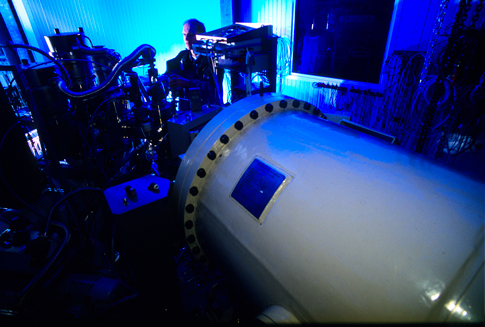
How are new elements created inside a star? How are these elements scattered in our Galaxy? The ELDAR project (burning questions on the origin of the Elements in the Lives and Deaths of stARs) will adress these and other fundamental questions in the life and death of a star. The thermonuclear reactions occurring inside a star have a key role in its evolution.
Measurement of these reactions in a laboratory on Earth is necessary to improve our knowledge of the life, evolution and death of stars. ELDAR, experimental project of nuclear astrophysics, will be financed through an ERC Starting for 1.5 M Euro won by Carlo Bruno (LUNA collaboration), Chancellor’s Fellow at Edinburgh University.
With ELDAR, researchers will develop new experimental approaches in two international laboratories in Europe, the Facility for Antiproton and Ion Research (FAIR) in Germany and the Gran Sasso National Laboratory in Italy, creating new connections between two European scientific communities that use different methods to study stellar settings closely connected in nature.
At FAIR, ELDAR will study nuclear reactions that involve radioactive nuclei, by making use of a unique method through the new heavy ion storage ring CRYRING.
At Gran Sasso, ELDAR will exploit the natural ultra-low background of the underground laboratory to study nuclear reactions occurring in low stellar temperatures in quiescent settings, in particular in globular clusters. This study will be carried out in the context of the LUNA collaboration. ELDAR will build a new detection chamber for charged particles in order to better exploit the skills of LUNA-400 underground accelerator.
Gianluca Imbriani, spokesperson of the LUNA collaboration says “The knowledge of the nuclear processes active during the hydrogen burning of the Red Giants stars is essential to understand globular clusters observations. ELDAR aims at measuring, by means of LUNA-400 accelerator, the nuclear reactions 23Na + p -> 20Ne + a, which will provide an important contribution for the understanding of sodium observation in GC.”
The LUNA collaboration involves about 50 researchers of Universities and Research Entities in Italy, Germany, Hungary and United Kingdom.
Roberta Antolini, INFN - Laboratori Nazionali del Gran Sasso: This email address is being protected from spambots. You need JavaScript enabled to view it.
REIS - 13.01.2022


